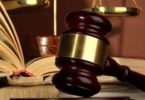What is bankruptcy?
(a) A government program to provide financial assistance to struggling businesses.
(b) A legal status where an individual or business is unable to repay their debts.
Which chapter of the U.S. Bankruptcy Code is typically used by corporations and businesses to reorganize and continue operations?
(a) Chapter 7
(b) Chapter 9
(c) Chapter 11
(d) Chapter 13
Which of the following tasks might a bankruptcy lawyer help clients with during the bankruptcy process?
(a) Tax planning for the upcoming year
(b) Negotiating with creditors to reduce interest rates
Related: Credit card questions and answers
What is the common requirement for individuals filing for bankruptcy?
(a) Demonstrating a history of successful investments.
(b) Completing credit counseling before filing.
Which major retailer filed for bankruptcy in 2018?
(a) Enron Corporation
(b) Lehman Brothers
(c) Big Basket
(d) Sears Holdings Corporation
Related: Recession Quiz
What is the first step in the bankruptcy procedure for an individual?
(a) Meeting with creditors to negotiate repayment terms.
(b) Filing a bankruptcy petition with the appropriate court.
(c) Selling off assets to repay debts.
(d) Requesting a credit score review.
What is the automatic stay in bankruptcy law?
(a) A temporary halt on creditor collection actions after a bankruptcy filing
(b) The legal process of debt discharge
(c) The requirement for debtors to provide collateral
(d) The appointment of a trustee to manage the debtor’s assets
What is the primary purpose of Chapter 13 bankruptcy?
(a) Liquidation of assets to repay creditors.
(b) Discharge of all debts without repayment.
(c) Reorganization of debts and creation of a repayment plan.
(d) Temporary suspension of creditor collection actions.
What typically occurs during the 341 meeting in a bankruptcy procedure?
(a) Filing the bankruptcy petition with the court.
(b) Negotiating repayment terms with creditors.
(c) Creating a repayment plan with the trustee.
(d) Meeting with the bankruptcy trustee and creditors to discuss the case.
Related: United States Debt Ceiling meaning and History
Which of the following best describes the purpose of bankruptcy?
(a) To eliminate all financial responsibilities.
(b) To provide a fresh start and manage debts in a structured way.
(c) To acquire assets without any financial obligation.
What is a potential long-term effect of filing for bankruptcy on an individual’s credit report?
(a) Immediate restoration of an excellent credit score.
(b) No impact on credit score.
(c) Temporary decrease in credit score.
(d) Permanent removal of credit history.
How does bankruptcy affect an individual’s ability to obtain new credit?
(a) It has no impact on their ability to get new credit.
(b) It may make it easier to qualify for loans with lower interest rates.
(c) It guarantees approval for new credit lines.
(d) It generally makes it more challenging to obtain new credit in the short term.
Which U.S. government legislation provides the framework for bankruptcy law?
(a) Financial Stability Act
(b) Consumer Protection Act
(c) Bankruptcy Code
(d) Debt Relief Act
Related: forex quiz
What is one potential benefit of filing for bankruptcy?
(a) Immediate elimination of all debts.
(b) Protection from creditor harassment and collection actions.
(c) Guaranteed increase in credit score.
(d) Exemption from future taxes.
What role does bankruptcy play in preventing foreclosure for homeowners?
(a) It guarantees full mortgage forgiveness.
(b) It has no effect on foreclosure proceedings.
(c) It can temporarily halt foreclosure and allow for a repayment plan.
(d) It forces homeowners to immediately vacate their property.
What does the “means test” determine when filing for bankruptcy?
(a) The individual’s level of spending on non-essential items.
(b) Whether the individual is eligible to file for Chapter 7 bankruptcy.
(c) The amount of debt that can be discharged in Chapter 13 bankruptcy.
(d) The total assets of the individual for liquidation purposes.
How long is the typical duration of a repayment plan under Chapter 13 bankruptcy?
(a) 3 months
(b) 1 year
(c) 3 years
(d) 7 years
Which chapter of the U.S. Bankruptcy Code is typically used by individuals to file for bankruptcy and seek debt relief?
(a) Chapter 7
(b) Chapter 11
(c) Chapter 13
(d) Chapter 9
Related: Quiz on Fundamentals of International Financial Management
Which of the following is a key requirement during the bankruptcy procedure?
(a) Accumulating more debt to demonstrate financial hardship.
(b) Keeping all financial transactions secret from the court.
(c) Ignoring communication from creditors.
(d) Attending credit counseling before filing for bankruptcy.
How can bankruptcy provide relief to an individual facing financial difficulties?
(a) By granting free access to luxury goods and services.
(b) By allowing unlimited spending without consequences.
(c) By discharging certain debts and providing a fresh start.
(d) By promising government-funded financial support.
What is the primary goal of filing for bankruptcy under Chapter 13?
(a) Complete discharge of all debts.
(b) Reorganization of business finances.
(c) Restructuring of secured debts and development of a repayment plan.
(d) Liquidation of assets to repay creditors.
Which type of bankruptcy allows individuals and businesses to reorganize their finances and create a repayment plan to satisfy their debts?
(a) Chapter 7 bankruptcy
(b) Chapter 9 bankruptcy
(c) Chapter 11 bankruptcy
(d) Chapter 13 bankruptcy
When an individual files for bankruptcy, what is an “automatic stay”?
(a) The requirement to sell all personal assets immediately.
(b) A delay in the bankruptcy process requested by the debtor.
(c) A court order preventing creditors from taking collection actions.
(d) A mandatory meeting with creditors before filing.
Related: mcq shares buyback
What caused the financial downfall of Lehman Brothers, leading to its bankruptcy in 2008?
(a) A massive cyberattack
(b) Investments in renewable energy
(c) Subprime mortgage crisis
(d) Labor strikes
What is the primary purpose of bankruptcy law?
(a) To protect creditors’ interests.
(b) To ensure that individuals and businesses continue operations without interruption.
(c) To provide financial support to struggling businesses.
(d) To provide a fair and orderly process for resolving debt-related issues.
In the United States, which federal law governs bankruptcy proceedings and outlines the different chapters of bankruptcy?
(a) Consumer Protection Act
(b) Financial Stability Act
(c) Bankruptcy Code
(d) Debt Relief Act
The bankruptcy of which energy company in 2001 resulted in one of the largest corporate bankruptcies in U.S. history at the time?
(a) Exxon Mobil
(b) Chevron Corporation
(c) Enron Corporation
(d) BP plc
What is the result of a successful bankruptcy filing?
(a) Erasure of credit history.
(b) Complete elimination of all debts.
(c) Immediate transfer of assets to creditors.
(d) Discharge or reorganization of debts, depending on the bankruptcy chapter.
Related: Microeconomics quiz
In a Chapter 13 bankruptcy, who is eligible to file for this type of bankruptcy?
(a) Only individuals with a low income and minimal assets.
(b) Only businesses experience financial distress.
(c) Both individuals and sole proprietorships with regular income.
(d) Only corporations with significant debts.






